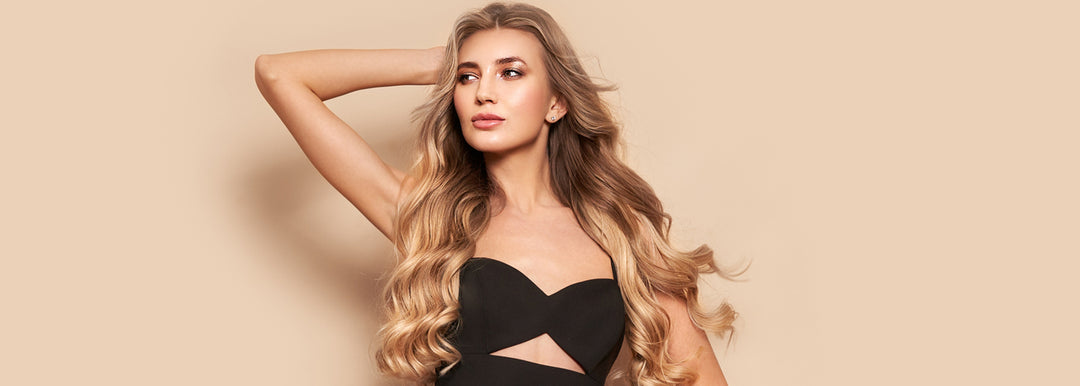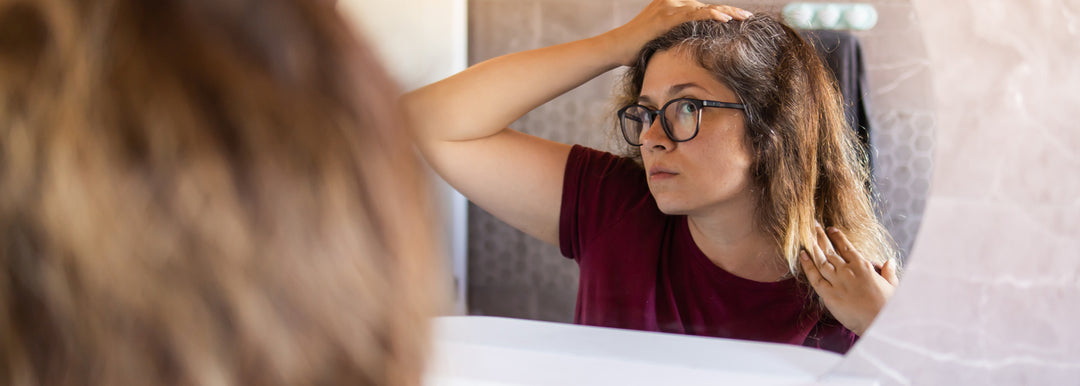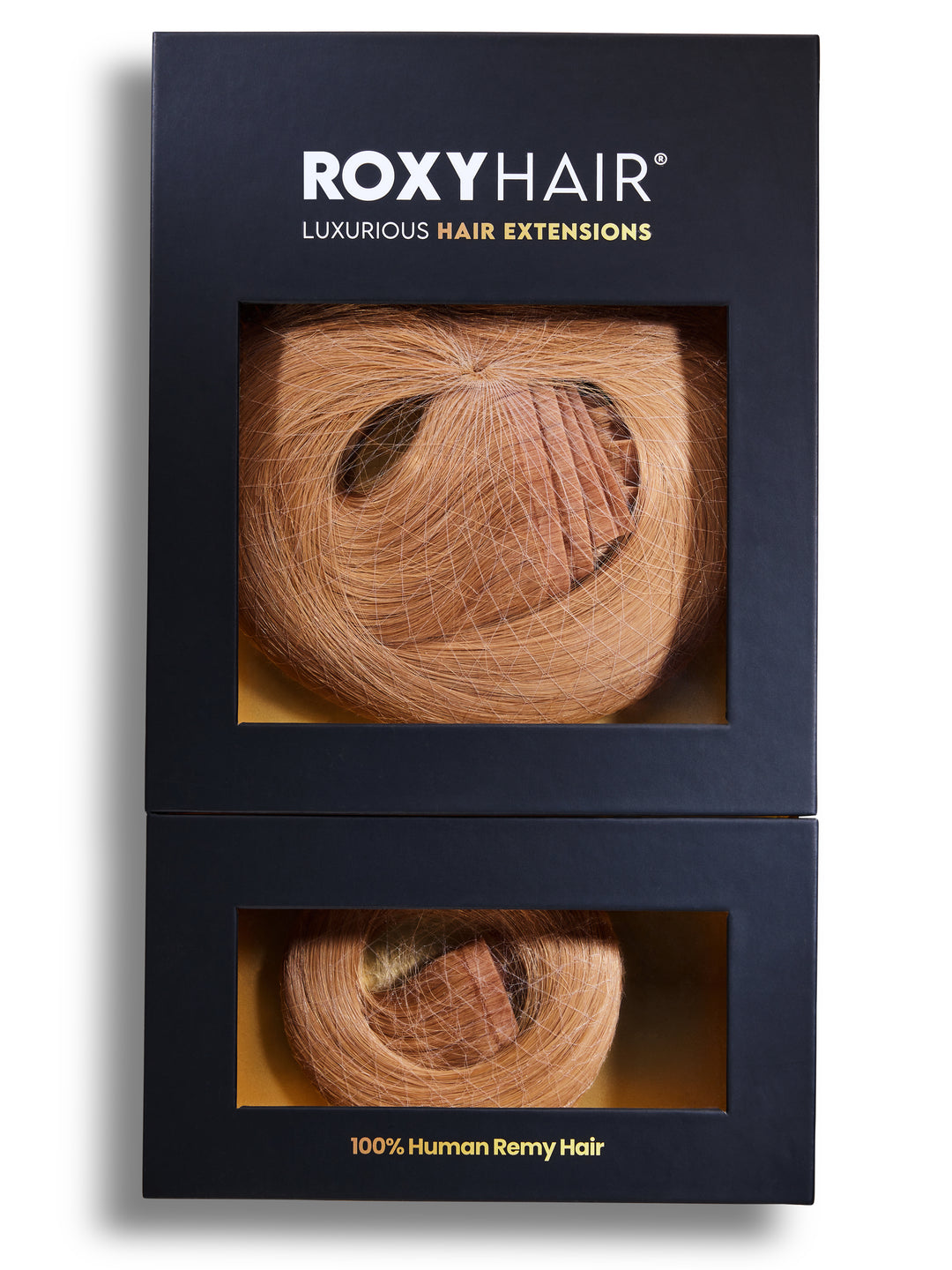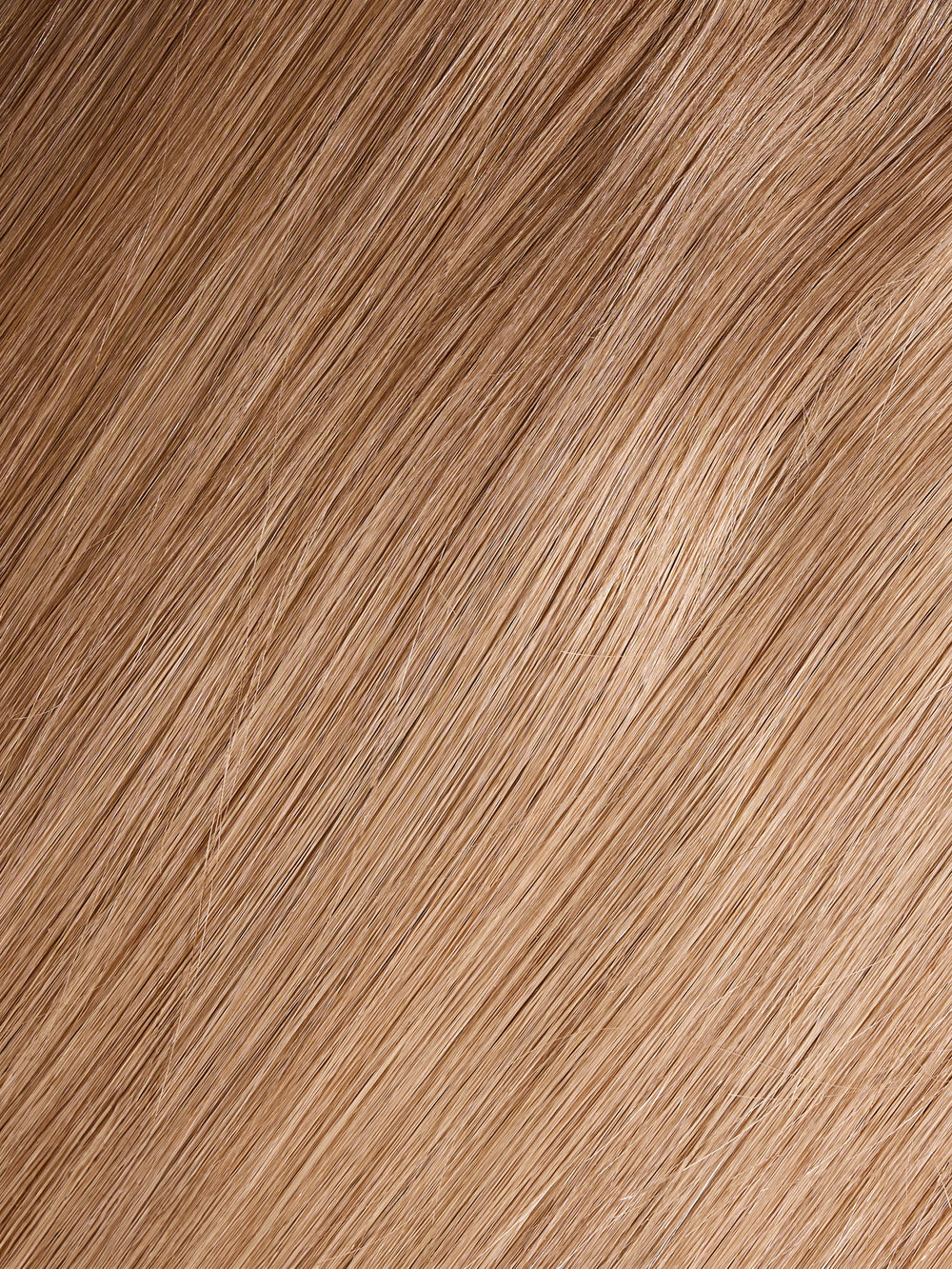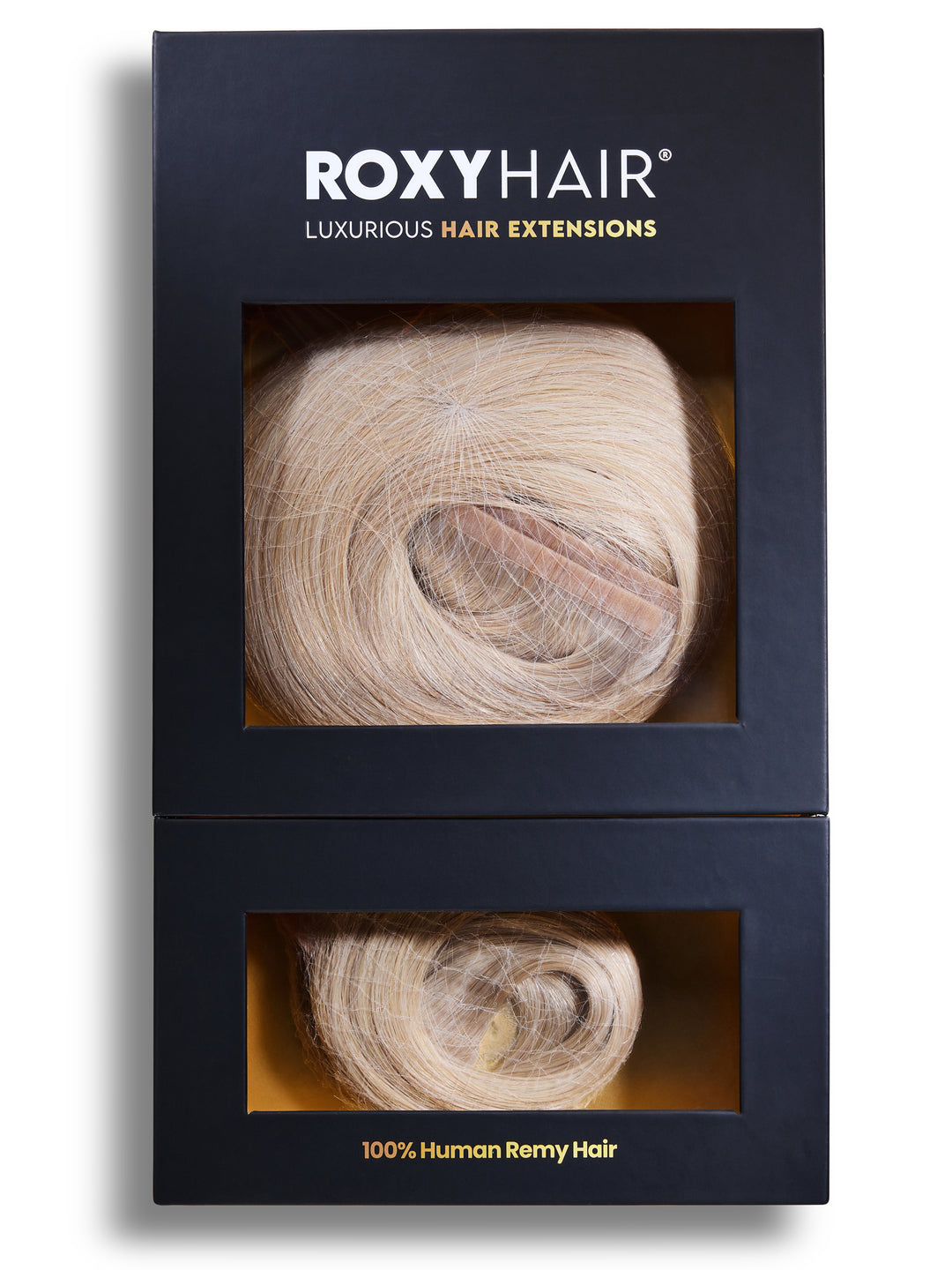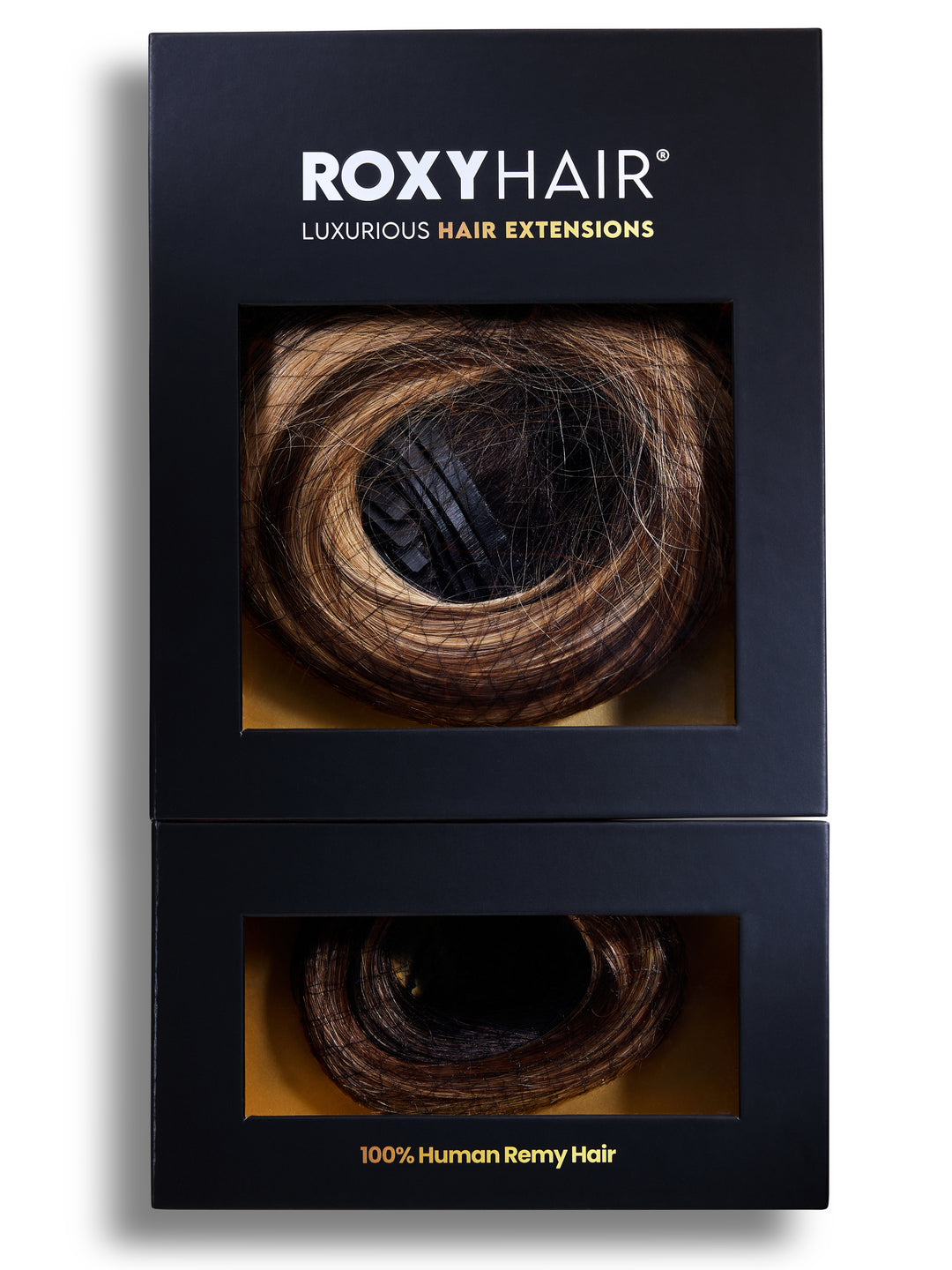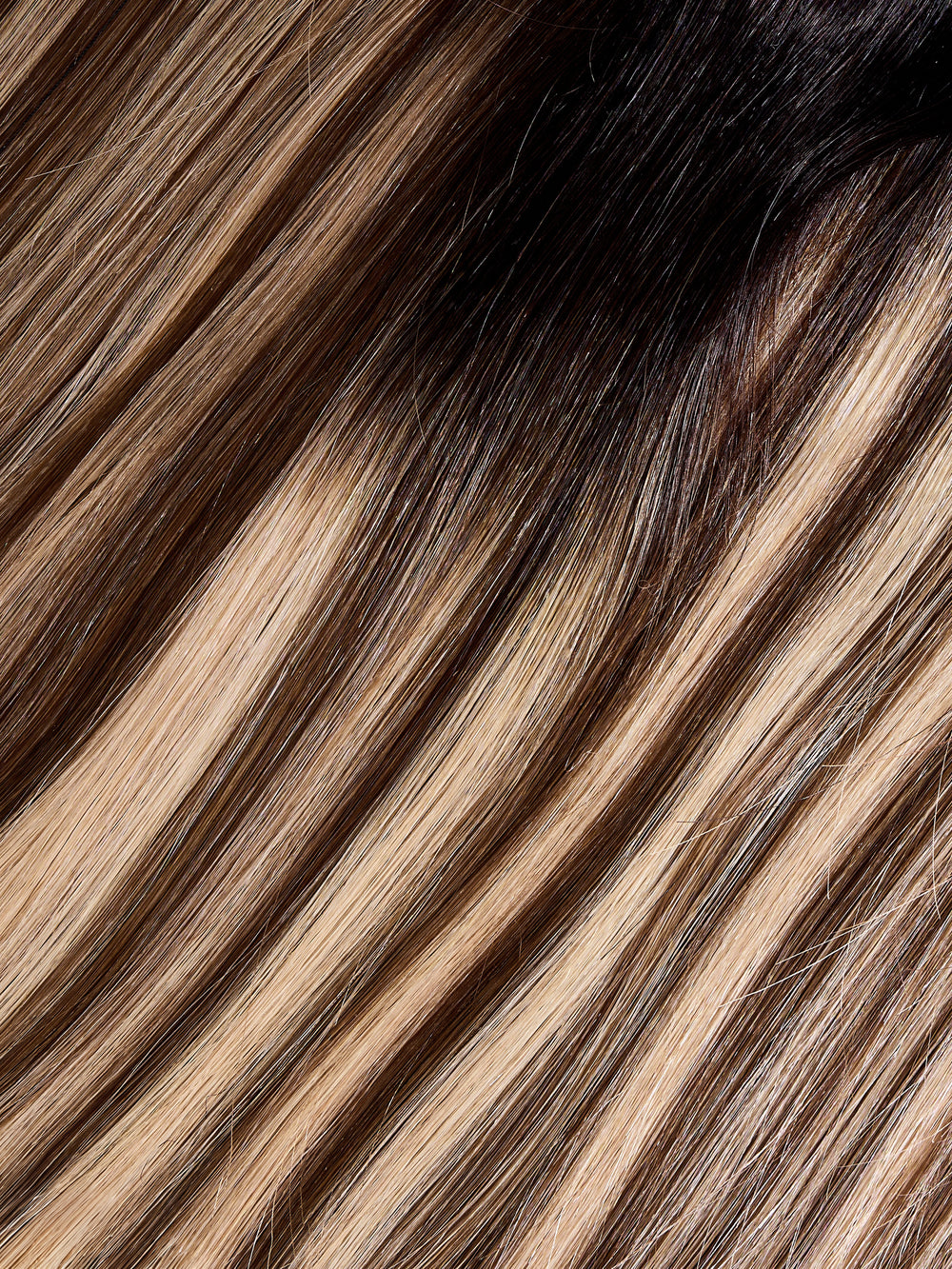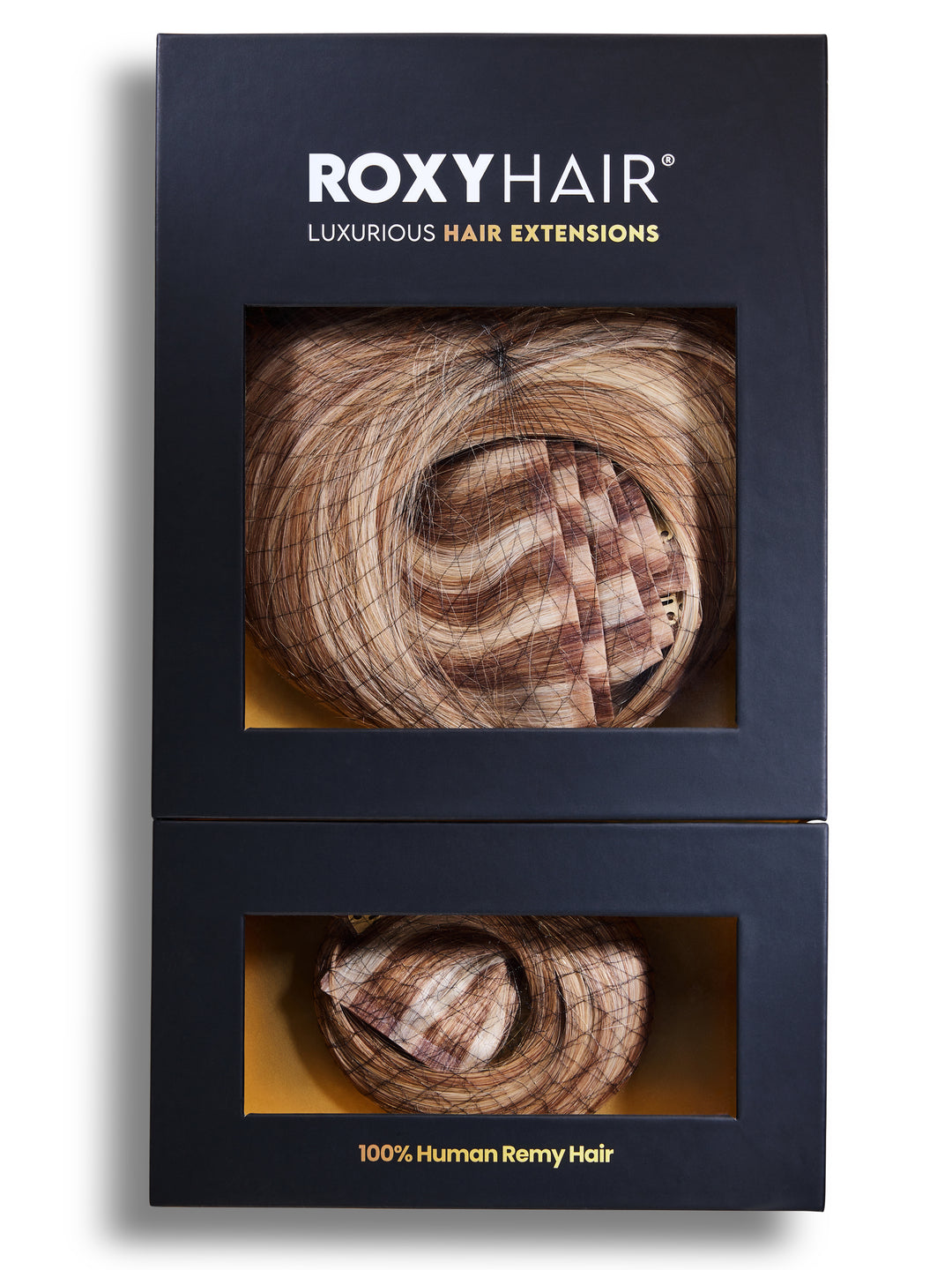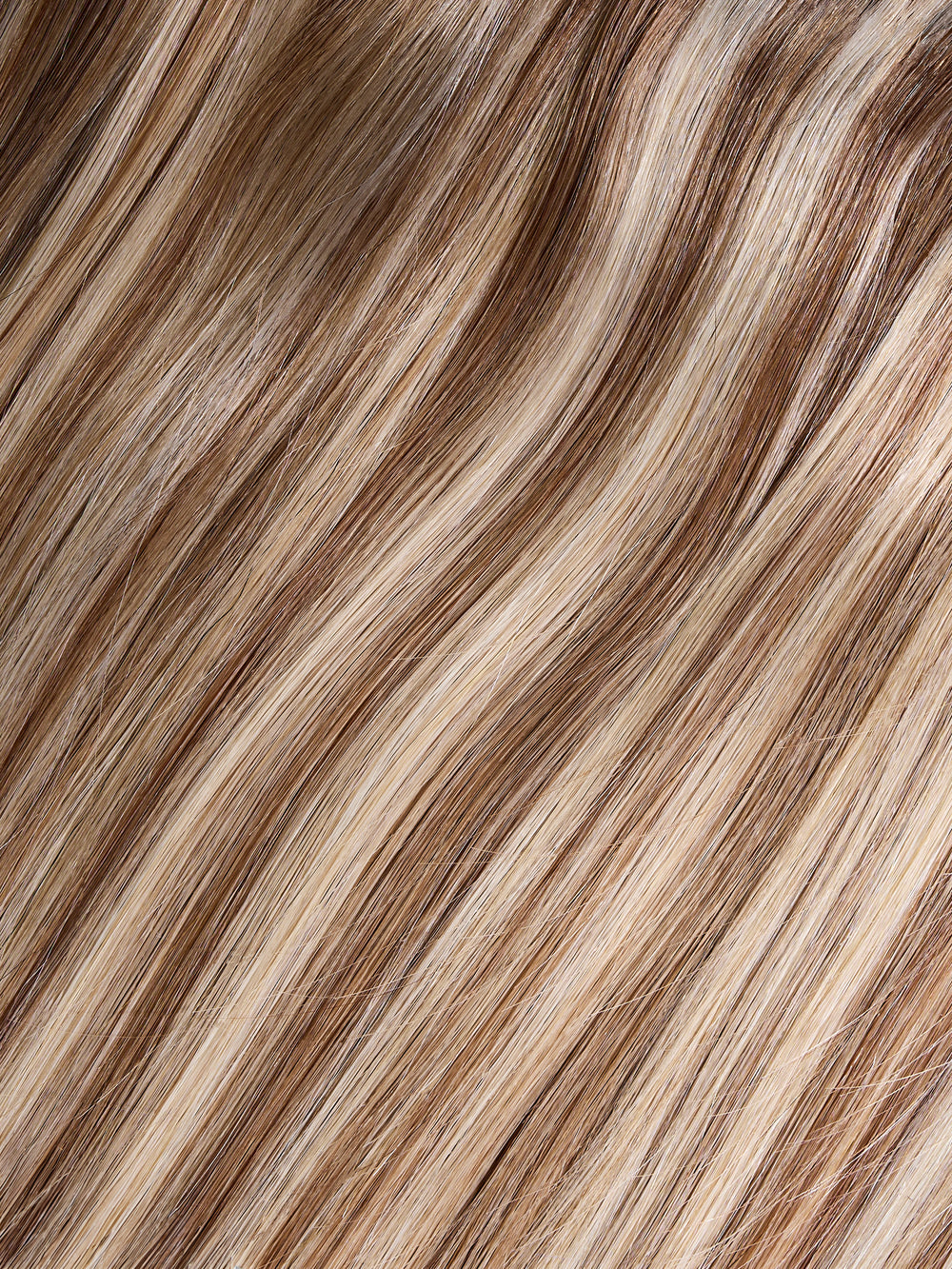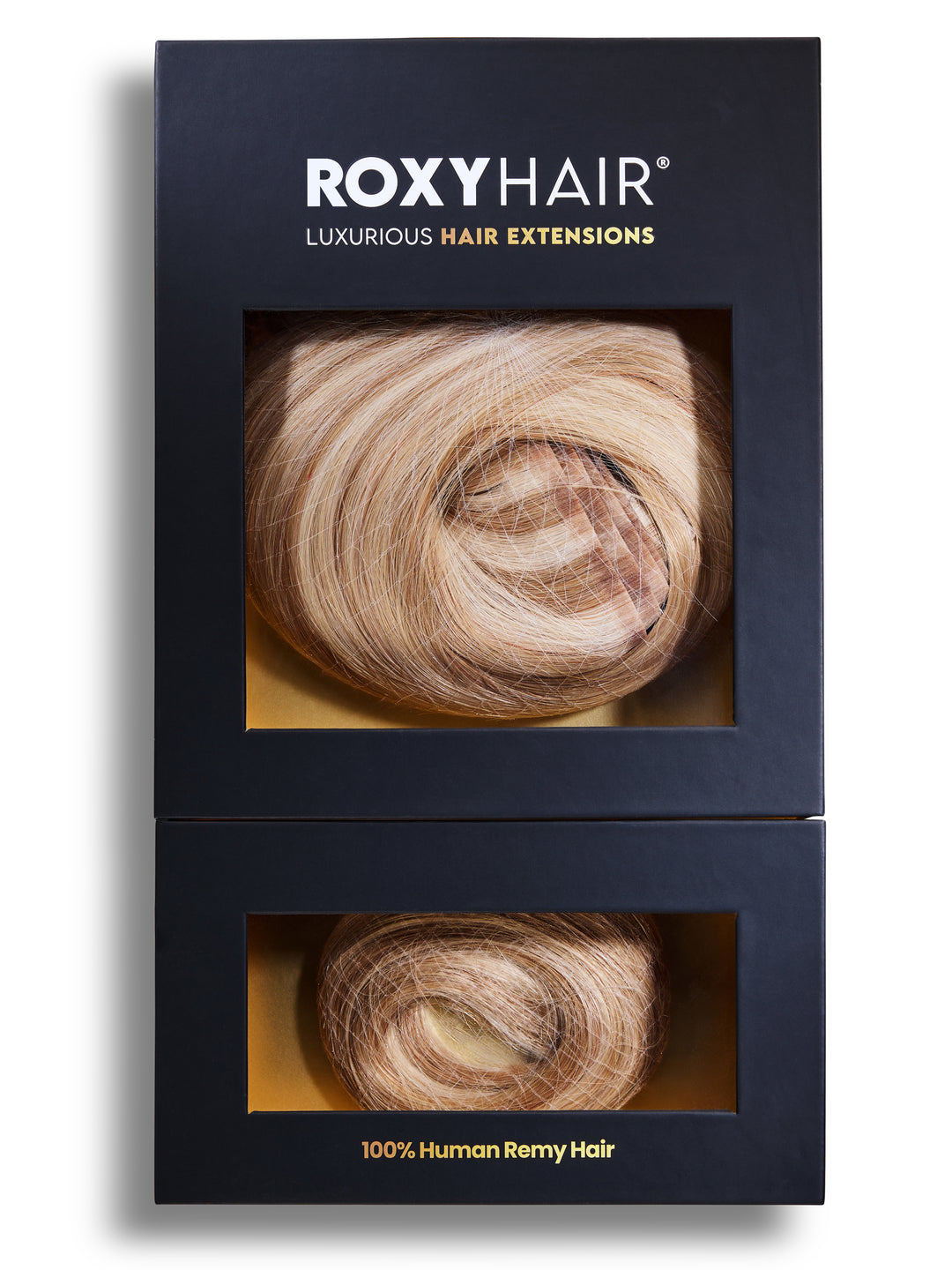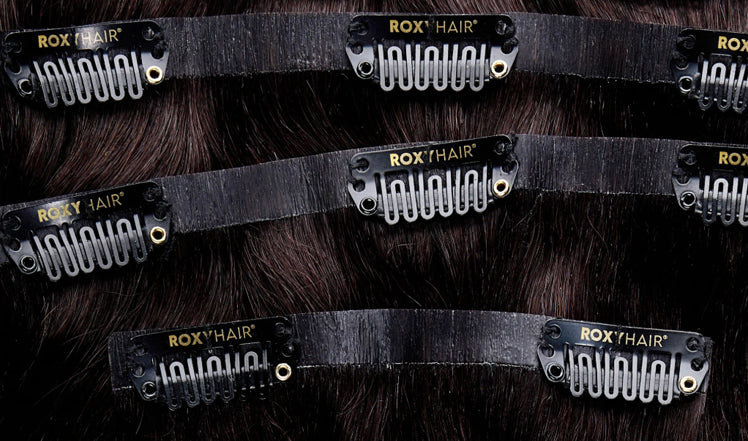Finding the sweet spot with hair extensions is kind of like finding the perfect pair of shoes. If you don't get enough, your hair will look thin and fake. But if you put on too many, you'll be weighed down and could even damage your natural hair.
Your hair is a blank canvas. Extensions are like brushstrokes adding depth and dimension. The right number blends seamlessly with your real hair for a gorgeous look. Go overboard though, and it's like attacking that canvas with thick, heavy brushstrokes. Overdone and lacking subtlety.
That's where this guide comes in handy- to strike that ideal balance. Whether your strands are fine and delicate or thick and luscious, no more guesswork. We'll make sure you nail it.
What You Will Learn
-
How to determine the ideal weight of hair extensions based on your natural density (medium, thick, thin and fine hair)
-
The relationship between hair extension length and the required weight for a natural look
-
Tips for selecting the right type of hair extensions (clip-ins, micro rings, tape-ins) based on your hair length and desired style
-
Techniques for customizing and blending hair extensions seamlessly with your natural hair
-
Proper maintenance and care routines to ensure longevity of your hair extensions
-
How to measure your own density of hair using simple methods like the ponytail test
Factors Affecting Extension Needs
Hair extensions have been around for a very long time. They were used in Ancient Egypt to improve people's looks and show social status. These days, hair extensions producers Foxy Hair® manufacture them from real human hair - strand by strand. Choosing the right hair extensions can be difficult. Here are some important things to think about when picking hair extensions:
-
Hair type matters when choosing extensions. They come in straight, wavy, curly, and kinky textures. Match the extensions to your natural hair whether it is longer or shorter hair for seamless blending.
-
Color and texture are key. Choose hair extensions that come in various shades. Choose a close match to your natural color. Texture should also blend well with your own hair.
-
Length and volume vary too. Pick extensions that complement your hair's natural length and fullness. This ensures a natural, blended look.
-
Budget is a consideration. Hair extensions can get pricey. There are options at different price points though. Choose what fits your budget.
-
Lifestyle plays a role. If you're active, clip-ins may work best - easy on and off. For lower maintenance, sew-ins or fusion extensions could be better.
Determining Your Ideal Hair Extensions Weight
When it comes to the thickness of hair extension sets, it's not about how thick each individual strand is. Instead, it refers to how much hair is attached to each weft. The higher the gram weight listed, the more hair is included in that particular set. So a higher gram weight means a thicker, fuller set of extensions overall.
For Fine and Thin Hair
If you have thin or fine hair and want more voluminous locks, hair extensions are a great solution, especially for those with very thin hair. You might wonder how much hair you need for the desired effect - the weight can range from 100 grams up to 160 grams for 20-inch length extensions. Just 50 grams of extensions can give subtle added length and volume, perfect for those with shoulder-length fine hair wanting a same length natural enhancement.
For Medium Hair Density
If your hair falls into the category of medium thickness or shoulder length hair, you're lucky. Medium hair, indicated by a ponytail circumference of 2-3 inches, typically responds well to a variety of products and styles. A 160 gram set of hair extensions is generally recommended to add thickness and length to medium thickness hair.
For Thick or Very Thick Hair
If you have a lot of thick, full hair, you can get bigger hair extensions. If it takes a long time for your hair to dry after washing, and your ponytail looks really thick and heavy, you probably have very thick hair. For very thick hair, a 220 gram set of extensions is recommended so they blend in naturally and don't look stringy.
220 gram clip-in extensions also work well if you have naturally thick hair and want more length, or if you have medium thickness hair and want a big boost in volume. To get a natural layered look, you can add soft, horizontal layers while keeping the length.
Calculating the Grams Needed for Length
To calculate the grams on how many hair extensions are needed based on length and volume, the amount varies depending on hair thickness and desired style.
For those with medium, fine, or shorter natural hair, you'll likely want 75 to 100 grams of human hair extensions if your desired length is up to 12 inches. If you're looking to add some extra volume on top of the length, aim for 100 to 150 grams.
For just a quarter head of hair extensions to add volume, 50 to 80 grams is enough. with medium to thick hair will probably need around 125 to 175 grams to achieve up to 12 inches of length. If you're truly blessed with very thick, luscious locks, you'll want approximately 150 to 200 grams for extensions maxing out at 12 inches long.
A full head set of hair extensions tends to require 150-200 grams - this amount works well for adding enviable length and volume to medium to thick manes.
When it comes to weave hair extensions, those with medium to long natural hair can likely get a seamless blend with around 150 grams.
For longer hair lengths, especially when using double-drawn wefts, you may want to bump it up to 200 grams. If adding volume rather than length is your goal with extensions, you'll need approximately 50 to 80 grams.
For a complete head of extensions, those with very thin hair should look at 80 to 100 grams, while thin hair generally requires at least 100 grams.
Those with normal hair thickness usually do well with 100 to 150 grams. And for our thick hair queens, 150 to 200 grams is the ideal range for a full, flawless set of extensions.
Selecting the Right Type of Hair Extensions

You've got a bunch of different options and varying lengths when it comes to getting hair extensions, depending on what you need and how you live your life. Let me break it down for you:
Clip In Hair Extensions
Clip-ins are super simple - they just clip right onto your natural hair. Perfect for getting some extra length and volume for a night out or special occasion when you need it.
Foxy Hair®’s most popular clip-in hair extensions weigh 180 Grams, making it an ideal choice for those who desire a natural look.
Shop Roxy Hair
Micro Rings and Nano Rings
Micro ring extensions are another semi-permanent method that uses teeny tiny rings to attach the hair extensions to your natural hair. They're delicate but can last 3-4 months with good care.
Nano rings are similar, but even tinier than micro rings. They're hyper discreet and can last up to 6 months since they put less stress on your natural hair.
Micro-link extensions have these tiny little metal beads that get clamped onto your natural hair, and then the extension strands attach to those beads. If you treat them right, micro-links can give you that luscious length and volume for 4-6 months.
Tape Ins and Sew In Extensions
Then you've got tape-in extensions, which are really thin and lightweight. They get taped onto your hair using this special adhesive stuff. Tape-ins are comfy and last a bit longer in adding length and fullness for more than just a day or two.
If you want something more long-term, sew-in extensions get sewn directly into your hair with a needle and thread. If you take good care of them, these hair extensions can last 2-3 months, giving you that bombshell look for a nice stretch.
Hair Extensions Length Chart
If you like to get the best hair extensions for your hair and add length and volume you've always wanted, this hair extensions length chart will help - use it to choose the right length of hair:
For Straight Hair:
-
12 inches: Shoulders
-
14 inches: Upper back
-
16 inches: Bra strap
-
18 inches: Shoulder blades
-
20 inches: Mid back
-
22 inches: Mid back
-
24 inches: Mid back
-
26 inches: Lower back
-
28 inches: Waist
-
30 inches: Hips
For Wavy Hair:
-
12 inches: Chin length
-
14 inches: Shoulders
-
16 inches: Upper back
-
18 inches: Bra strap
-
20 inches: Shoulder blades
-
22 inches: Mid back
-
24 inches: Mid back
-
26 inches: Mid back
-
28 inches: Lower back
-
30 inches: Lower back
For Curly Hair:
-
12 inches: Below the ear
-
14 inches: Chin length
-
16 inches: Shoulders
-
18 inches: Upper back
-
20 inches: Bra strap
-
22 inches: Shoulder blades
-
24 inches: Mid back
-
26 inches: Mid back
-
28 inches: Lower back
-
30 inches: Lower back
How to Measure Your Own Hair Density

It's super important to really understand your average hair density before picking out the right extensions for you. But before you even start measuring, make sure your hair is freshly washed and dried - you don't want any oils or product buildup throwing off the results.
One easy way to check your density is to part your hair and take a good look at your scalp under some bright lighting. If you can't see your scalp at all without parting, that means you've got high-density hair. If it's slightly visible, you're rocking a medium density. But if that scalp is clearly on display, honey, you're working with low-density hair.
Another trick is the ponytail test. Slick all your hair back into a nice tight ponytail, and then measure around the base with a tape measure. If it's less than only a few inches around, that's low density. 2-3 inches means you've got that medium density going on. But if it measures 4 inches or more, you're blessed with some high-density locks.
Full Head vs. Half Head Extensions
Now let's talk about whether you need a full head of extensions or if you can get away with just a half head. Full head sets are designed to cover your entire mane, top to bottom. These are perfect if you want to add enough hair and volume, whether you're starting with thick or thin hair.
Half head sets, on the other hand, only cover the top half of your hair. These are a great option if you create length mainly looking to boost volume and body, especially if you've got finer, thinner hair or a smaller head size.
The number of packs you'll need can vary depending on the size of that beautiful head of yours and how thick or short your current hair situation is. If you've got a bigger head or you're rocking a blunt, short cut, you might need to stock up on a few extra packs to get that seamless, natural blend with your real hair.
Expert Tips for Blending Extensions
Blending extensions into shorter styles takes some finesse. Layer them around the sides to avoid that harsh short-to-long line. Adding more on one side, like the right, creates balanced fullness. For textured short cuts, curling the hair extensions is key for blending seamlessly.
Different hair textures need different blending approaches. Fine hair? Go for invisible tape, flat tracks, or nano rings - they minimize bulk. Velcro rollers or headbands let you style without heat damage for any texture. If you have coarse or curl hair, wash new extensions first to loosen them up for a natural blend with your texture.
No matter your hair, little blending tricks make a huge difference. Clip wefts higher or space them out for a smoother blend. Trim and layer the extensions to precisely match your current cut. Washing them helps "fluff" the texture to blend with yours. Use texturizing products when styling to blend the movement.
Layer those hair extensions to complement and blend with your layered cut. Consider having a pro stylist cut them to perfectly match and highlight your layers.
Maintenance and Care for Human Hair Extensions
Maintaining your human hair extensions is crucial for keeping them looking fab. Here's how to do it right:
-
Use sulfate and alcohol-free shampoos and conditioners made for extensions. These gentle formulas won't strip away the natural oils, keeping the extensions from getting dry and brittle.
-
When washing, focus on cleaning the roots. Only apply conditioner to the ends - this prevents matting and slippage at the attachment points.
-
Brush gently from the ends to the roots. This minimizes strain and breakage.
-
Make sure your extensions are fully dry before bed to avoid overnight tangling and matting. A microfiber towel or blow-dryer can help speed things up.
-
Do a deep conditioning treatment especially on hair ends with oils or a homemade mask once a week. Extensions don't get natural oils from your scalp, so this extra step is key for keeping them soft and moisturized.
-
If you want to color your extensions, go for semi-permanent or demi-permanent dyes with mild developers.
-
Avoid bleaching or highlighting - these harsh processes can seriously damage the hair and cause premature shedding.
Summary
Finding the perfect hair extensions is all about knowing what works best for your hair type and the look you're going for. Here at Foxy Hair®, we get that hair density, length goals, and the right extension weight are super important factors. That's why we offer so many high-quality extension options that can be customized just for you.
The first step is checking out your hair's natural density - this'll help determine how many extensions you need to blend them in seamlessly. Are you wanting to add some serious length, or is extra volume more your vibe? The style of extensions and how much you use makes a huge difference in nailing that flawless finish.
Of course, taking good care of your extensions is crucial if you want them to look gorgeous for as long as possible. But don't sweat it - with a little know-how, you'll be able to rock thick hair that perfectly complement your natural hair.
Why not head over to your cart and check out today!
Frequently Asked Questions
How many bundles is 100 grams of hair?
100 grams of hair is equivalent to 2 bundles.
Is 200 grams of hair enough for a full sew in?
Yes, 200 grams of hair is enough for a full sew-in.
How do I select the right type of hair extensions?
Consider your hair range, desired style, and lifestyle when what hair you will need. For short hair, tape-ins or nano ring extensions are often best for a seamless blend.
Can I customize my hair extension set?
Yes, you can customize your extensions.
How do I measure my own hair density?
You can measure your own hair density by doing the ponytail test - tying your hair into a tight ponytail and measuring the circumference with a tape measure.
Does my natural hair texture and thickness affect the amount of hair extensions I need?
Yes, it affect the amount of hair extensions you need.




























